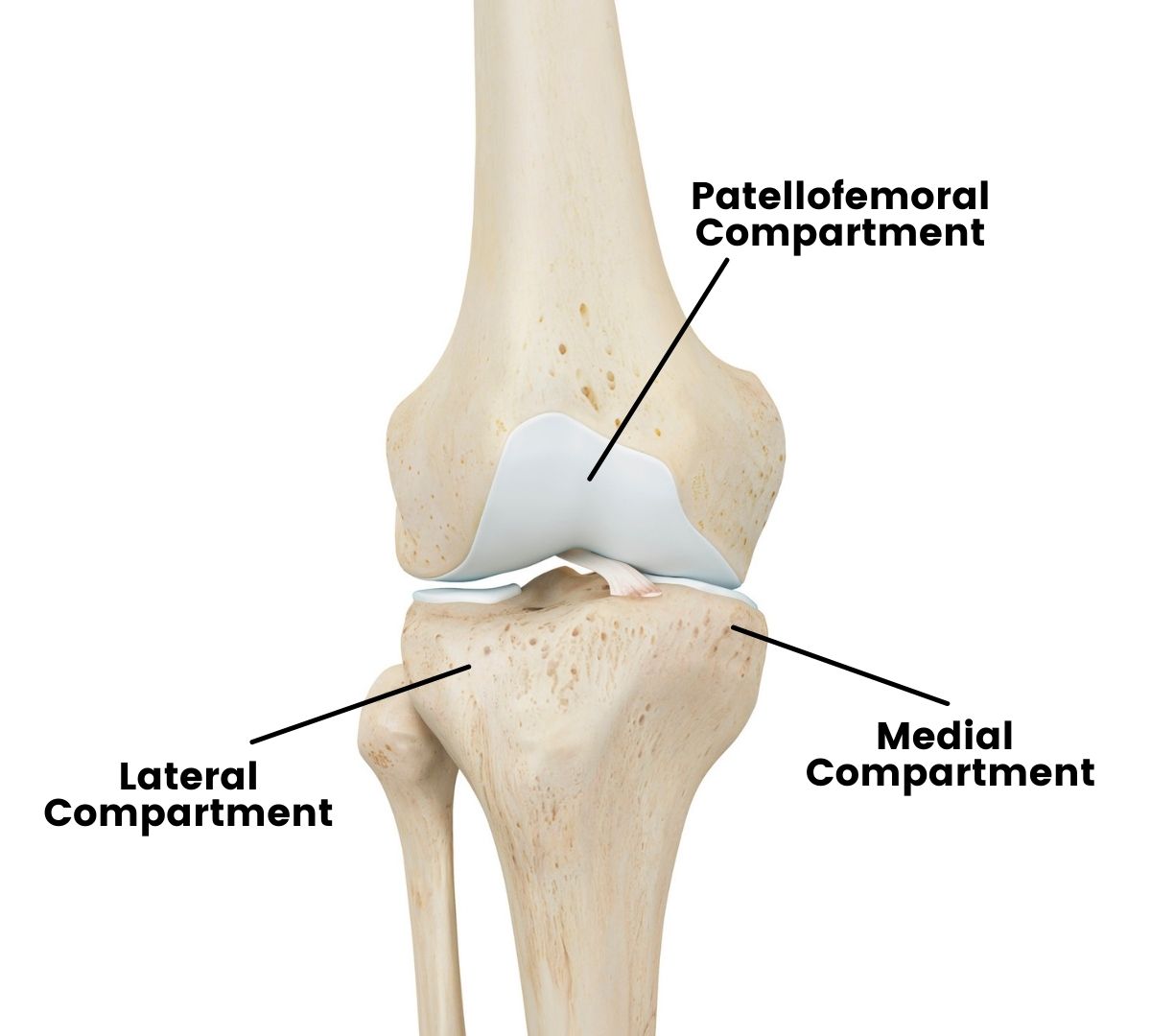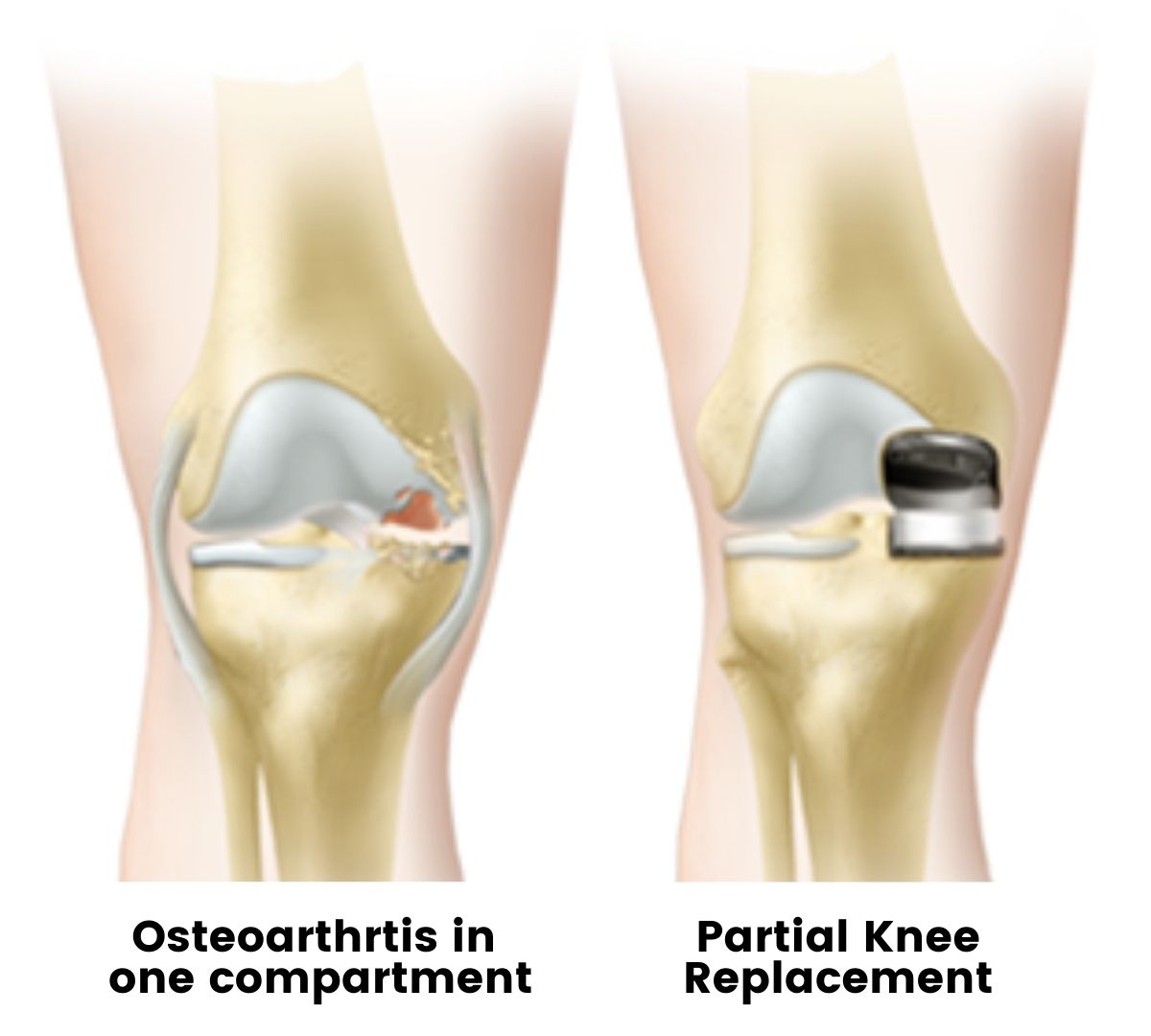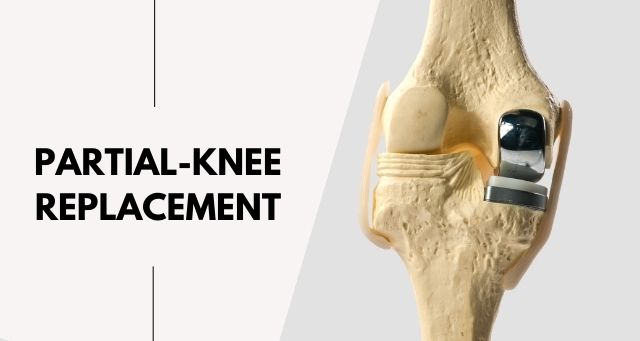WHAT IS PARTIAL KNEE REPLACEMENT?
Partial Knee Replacement, also known as Unicondylar Knee Replacement or Unicompartmental Knee Arthroplasty (UKA), is a surgery that is performed to replace only one part of the knee compartment. It is a surgical procedure used to treat arthritis affecting one of the three compartments of the knee in which the damaged parts of the knee are replaced with prosthetic material. Partial Knee Replacement is often done with smaller incisions, causing less tissue damage and less blood loss, which makes faster recovery times with less pain and discomfort.
WHO IS THE CANDIDATE FOR PARTIAL KNEE REPLACEMENT?
If you are suffering from osteoarthritis that has advanced to a stage where non-surgical treatment options are no longer relieving your symptoms, your doctor may recommend Knee Replacement Surgery as an option to relieve pain and regain movement.
To be able to undergo Partial Knee Replacement, your arthritis must be limited to one compartment of your knee.
The knee is divided into three major compartments:

- Medial Compartment (the inner side of the knee)
- Lateral Compartment (the outer side of the knee)
- Patellofemoral Compartment (the front side of the knee between the kneecap and your thighbone)
Patients with the initial stage of osteoarthritis with only one damaged compartment may be candidates for Partial Knee Replacement Surgery. If more than one of these compartments is affected by osteoarthritis, a Total Knee Replacement is typically recommended instead.
There are also a few things that make you ineligible for a Partial Knee Replacement Surgery:-
- Inflammatory arthritis
- Ligament damage
With the proper patient selection, modern unicompartmental knee replacements have provided excellent results in younger patients with faster recovery and a better range of motion.
BENEFITS OF PARTIAL KNEE REPLACEMENT
Partial Knee Replacement has various benefits which include:
- Smaller Incisions or Cut
- Less bone removal
- Less tissue injury
- Minimal blood loss
- Minimal pain after the surgery
- Speedy recovery
- Improved range of motion
WHAT HAPPENS DURING THE SURGERY?

During the Surgery- Bone Preparation- Your surgeon will Insert a spacer- The surgeon then places a plastic insert between the two metal components of the implant which creates a smooth gliding surface for the joint movement. Use special saws to remove the cartilage from the damaged compartment of your knee.
Positioning the Implant- After measuring the size of your bones and the position of the metal implants. The surgeon replaces the removed part of the cartilage and bone with metal coverings that recreate the surface of your joint. These metal parts are typically held to the bone with cement. Alternatively, in cementless fixation, the metal parts may be press-fit to the bone to allow the bone to grow onto the implant.
Inserting a spacer- The surgeon then places a plastic insert between the two metal components of the implant which creates a smooth gliding surface for the joint movement.
Recovery Period- After the surgery, you are shifted to the recovery room, where you will be closely monitored by nurses as you recover from the anesthesia. You will then either be discharged home or taken to your hospital room if you need to stay overnight.
WHAT HAPPENS DURING THE RECOVERY?
You can start moving the knee the day of your medical procedure itself. You're normally released or later than a couple of days after a medical procedure. The ability to move the knee will return quickly and with less pain as compared to the Total Knee Replacement.
After surgery, you will feel some pain, but your surgeon and nurses will make every effort to help you feel as comfortable as possible after the surgery. Many types of medicines are available to help control pain, including opioids, non-steroidal anti-inflammatory drugs (NSAIDs), and local anesthetics.
Treating pain with medication can help you feel more comfortable, which will help your body heal and recover from surgery faster.
The Doctor may recommend some sort of physiotherapy exercises that will help you in recovering by maintaining your range of motion and restoring your strength.
You'll be given some medicines to prevent the formation of a blood clot while in the clinic and possibly for a while after you're released.
Assuming that all the things work out positively, you are expected to have returned to full movement in around six weeks to about two months.
Movement activities like running/jogging may not be suggested for a while to the patients as it may cause strain to the knee but you can comfortably perform your daily activities.
Learn More About Partial Knee Replacement Surgery
For many patients, Partial Knee Replacement Surgery allows them to live without pain and get back to doing the activities they enjoy—all with a much easier recovery than Total Knee Replacement.
If you think you may be a good candidate for Partial Knee Replacement surgery, make an appointment with us to learn whether or not the procedure is right for you. Even if you’re not a candidate, Our Senior Orthopaedic & Joint Replacement Surgeon, Dr. Dhiraj Marothi Jain will go over other treatment options with you so that you can start addressing the cause of your pain.
A NOTE FROM RACE KNEE CLINIC
Don’t limit your life & restrict your movements because of hip pain. There are ways with which you can manage your pain and enjoy those lively moments again which were once taken back by that pain & discomfort.
We are RACE KNEE CLINIC, situated in the heart of Ahmedabad City with STATE-OF-ART Technology to deliver INTERNATIONAL STANDARD HEALTHCARE & HUMAN CARE.
We are also there with you for OPD Consultation in the following cities:
- Surat
- Ahmedabad
- Kolkata
- Jaipur
- Bikaner
- Jodhpur
- Pali
- Udaipur
- Nokha
- Raipur
- Guwahati
- Siliguri
If you have Knee Pain or Suffering from any type of joint pain you can contact RACE KNEE CLINIC to get the best consultation and treatment for your problem.

